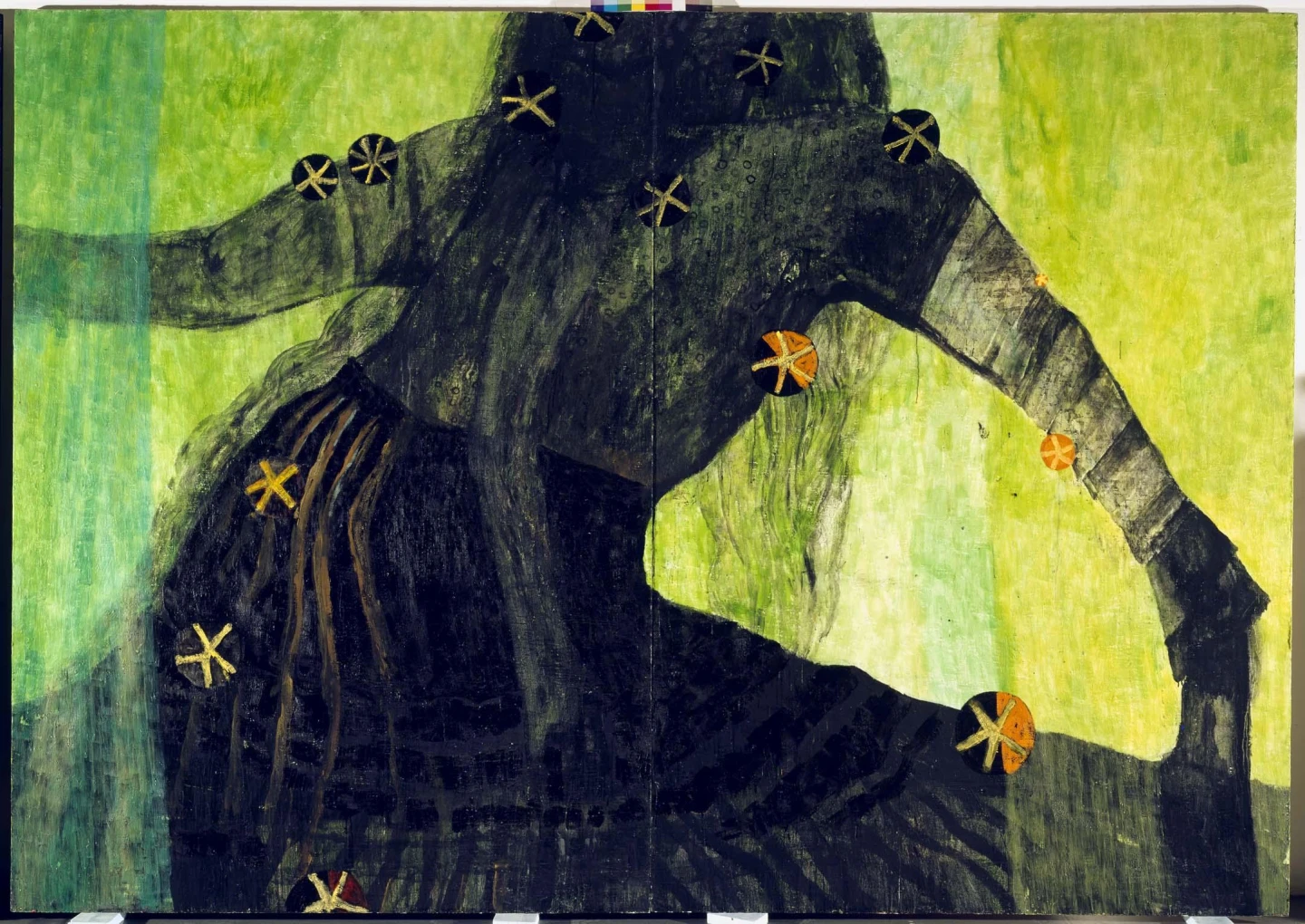Martin Assig. Envoltura

<p></p>
Martin Assig (Schwelm, Germany, 1959) proposes an exhibition divided into two sections: the first presents more than one hundred drawings, while the second space is occupied by four large tables, with dimensions that reach two and a half metres wide and whose common element is the formal reminiscence of a skirt: Falda roja, Vestido, Mujer and Mujer con falda; all four from 2000. In them, the garment becomes a pictorial as well as symbolic support and welcomes the diversity of motives and chromatic ornaments.
This statement of corporeality and the use of a encaustic technique -by which the pigment is applied to wax that is still liquid and whose introduction to contemporary painting is thanks to Jasper Johns- give his work a strong anthropological edge, as well as the exploration of conceptual values of painting as art. In this way with wax he creates matte surfaces in rich tones, which appear affected and worn by the passage of time.
The idea of the dress as architecture of the body supposes in these great pieces the materialisation of one of Assig’s great artistic obsessions: Frida Kahlo and her iconography of the dress as an orthopaedic support to a failed anatomy. Seen from another point of view; in these skirts as superstructures, one can also notice a tribute to seventeenth century Spanish painting, particularly portraits of monarchic pomp produced by Diego Velázquez, or later by Francisco de Goya. What these readings show is Assig’s position in defence of the practice of painting and the power of the images themselves, which, is coherent with his career as one of the leading representatives of the painting-painting trend developed in Europe the late eighties.
The set of drawings, mostly made in encaustic and, in other cases, graphite, show the world of ambiguous images that feed Assig’s imagination, characterised by its difficult interpretation, although it rarely responds to random reasons. His images, both abstract and figurative, establish a conceptual link with the world of votive offerings and seem to obey mystical or initiation rituals.
Assig develops this vocabulary of images to represent abstract ideas -in essence the great themes of love and death- and for this formulates unprecedented visual structures. However, while the figurative elements of these drawings (eyes, breasts, heads, hands) can be assumed as mysterious abstract signs of a symbolic character, abstract motifs appear to refer to a certain primitive seed.
Artists
Organised by
Museo Nacional Centro de Arte Reina Sofía in collaboration with Galería Senda, Barcelona
Image gallery
